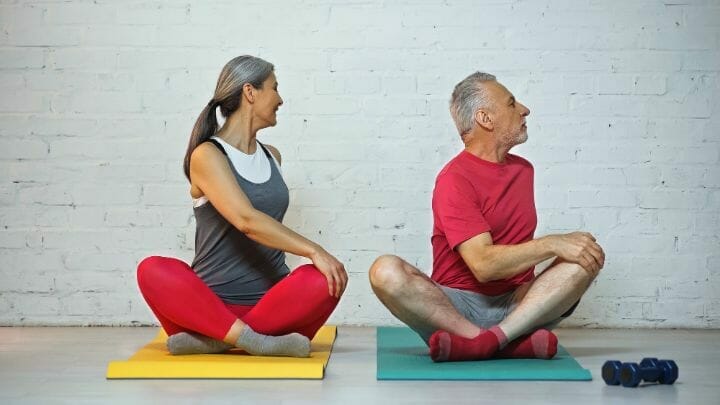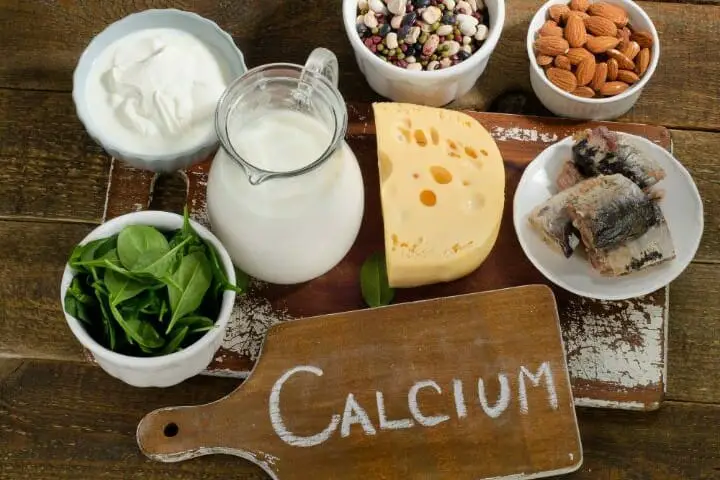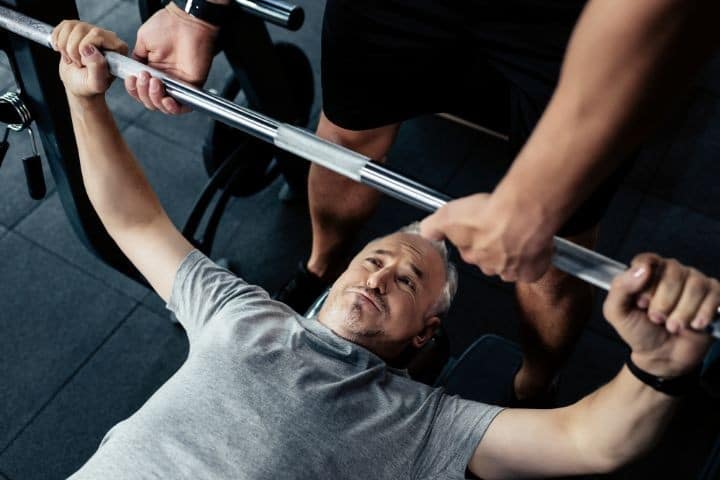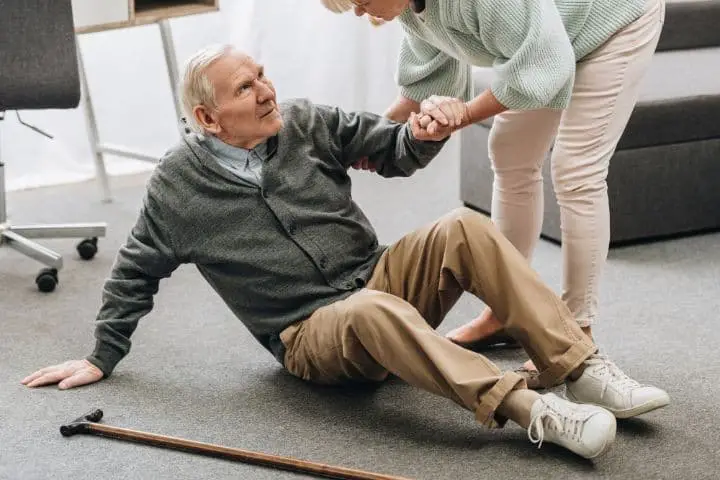Whether you are young or elderly, bone health is important for people of all ages. As we approach the age of 30, we tend to lose bone mass and this trend continues as we grow older. Paying attention to our bone health as we age is therefore very important.
But what is good bone health anyway? Having good bone health means you are capable of using your bones in your daily life without limitation or severe discomfort.
In this article, you will learn about some factors that affect bone health and some changes you can make in your life to make sure you have strong bones.
Contents
Factors that Affect Bone Health
Many factors contribute to bone health, including diseases, sex, diet and lifestyle choices.
Osteoporosis
One of the most common problems with bone health is osteoporosis. Someone who suffers from osteoporosis usually experiences pain in the back and knees and often feels stiff after periods of inactivity. Most patients with osteoporosis suffer from height deficiency and abnormal posture.
Arthritis
Often confused with osteoporosis, arthritis is a general term used for conditions that affect the joints and surrounding tissues. There are many classifications of arthritis, such as osteoarthritis and rheumatoid arthritis which are two variants that play a major role in the frailty of elderly people. These variants are also often present in those who are suffering from mobility issues.
Osteoarthritis deals with the degeneration of bones and typically appears in those who are 50-60 years old. It can be localized on one side of the knee, shoulder, or back. A common symptom is morning stiffness which lasts for fewer than 30 minutes and subsides from continuous activity.
Rheumatoid arthritis is an autoimmune inflammatory disease that can affect almost all of the joints in the body bilaterally. Your knees, hands, and all other joints may all be affected.
This condition manifests rarely in older people, but the onset is typically in those who are 20-40 years and progresses in severity as the person with rheumatoid arthritis ages.
You may also like Best Walking Boot For Lisfranc Fracture
Sex
Both osteoporosis and rheumatoid arthritis are more common in women than men. This is because women have less bone tissue and a postmenopausal woman tends to experience hormonal changes in her body which makes her more susceptible.
These hormonal changes can lead to a decrease in estrogen, a hormone that inhibits bone resorption by acting directly on osteoclasts. If estrogen decreases, bone regeneration is also reduced. Women are also more likely to experience rheumatoid arthritis than men.
Pain perception studies have also shown that older women express more discomfort about their knee or back pain than men do.
Nutrition or Diet
Nutrition and diet have a drastic influence on our bone health. You are probably already aware of how vital calcium is for good bone health, but are you getting enough? Most adults require at least 1,000 mg of calcium per day, but women over 50 and everyone over 70 should be getting 1,200 mg per day.
According to Mayo Clinic, good sources of calcium include sardines, kale, broccoli, dairy products, etc.
It’s not just calcium you should consume for bone growth, but Vitamin D as well. Vitamin D is key to bone formation because of its importance to the absorption of calcium.
Fatty fish like salmon, tuna, and mackerel are good for vitamin-D. Beef liver, cheese, mushroom, and egg yolks are also foods that are rich in Vitamin D and should be a part of your diet. Read Foods for Rebuilding Healthy Cartilage to have a comprehensive list of food to take to rebuild cartilage and promote healthy joints.
For individuals who have a Vitamin D deficiency, supplements are available. Those who lack Vitamin D in their diet can suffer from ailments like osteomalacia, which is a softening of the bones.
In children, this can manifest as rickets. In adults, osteomalacia can result in fractures and a weakening of the load-carrying joints like those in the spine. Failing to get enough calcium in your diet can cause low bone mass which can lead to osteoporosis and osteopenia.
Use Of Alcohol And Tobacco
Smoking cigarettes affects bone density and integrity. It is still difficult to determine if smoking is a primary factor in the weakening of bones, or if other risk factors that are typically present in a smoker’s lifestyle are responsible.
Habitual smokers also exhibit other risk factors of osteoporosis: they are usually thinner, drink more alcohol, get less exercise, and have poorer diets than non-smokers.
Studies show that people who drink alcohol frequently are at risk for poor bone health. Consuming greater than 3 ounces per day (about 2-3 typical drinks) has been shown to increase bone loss.
Although the research is not complete, some studies have suggested that moderate alcohol intake may be beneficial to health, but can be damaging if a person is consuming more than what is recommended.
You may also like Best Workout DVD For Seniors
Best Exercises for Bone Health
You are now armed with the knowledge of common causes of poor bone health. In the section that follows, you will learn the best types of regular exercise to develop stronger bones.
Weight-Bearing Exercises
Weight-bearing exercise is the top recommendation by physicians, physical and occupational therapists, and exercise experts for better bone health and muscle strength.
Wolff’s Law states that bones adapt according to the demands placed on them. By placing weight on the joints through strength training, these joints will be able to tolerate standing or walking for longer periods. Here are some of the top forms of weight-bearing exercise:
- Squatting
- Lunging
- Weight shifting while standing
- Kettlebell exercises
- Weightlifting
- Working with resistance bands
- Golfing
- Hiking
These muscle-strengthening exercises increase the ability of your joints, such as those in your spine, to perform weight-bearing activity.
Be sure to check in with your trainer, occupational or physical therapist or your physician to determine whether strength training exercise, body weight, or resistance training fits your exercise program and health status. If you already have thinning bones in your spine, some activities may not be suitable for you.
Cardiovascular Exercises
Cardiovascular exercises include forms of impact exercise including:
- Brisk walking
- Jogging
- Running
- Cycling
- Walking a dog or going on a walk with friends
- Dancing
- Low-impact aerobics
- Jumping rope
- Racquet sports
Not only is this type of physical activity good for your bone health, but it is also good for your heart health and improves the flow of blood throughout the body.
Other alternatives include water aerobics, which is especially helpful for those suffering from any kind of arthritis. Being submerged in a pool can help aid the movement of stiffened and painful joints.
These classes are available for enrollment in your local gym or community pool. Step aerobics is also an effective physical activity and one that is relatively easy to incorporate into your routine.
Make sure to eat enough carbohydrates before doing these exercises. You may want to consult your doctor to determine which of the aforementioned exercises are right for you. Always remember to stop if you are experiencing unusual symptoms of dizziness or vomiting during cardiovascular workouts.
You may also like Best Yoga Mats With Alignment Lines
Yoga Exercises and Meditation
A balance exercise that combines fitness and meditation can help relax your body, build muscle, and at the same time improve bone health. Yoga poses involve bodyweight tolerance, balance, and concentration. Yoga also improves your posture which will better support your spine.
An alternative form of balance exercise is tai chi, a form of slow and graceful moves. Tai chi builds strong bones and also improves your balance and coordination.
Yoga and tai chi can be difficult for people who are not used to having their bodies in some of the more unusual positions. It may be beneficial to enroll in a class or seek help from yoga or tai chi instructor.
According to Intermountain Health, for people suffering with osteoporosis yoga can be fruitful and can help in improving the bone health.
The 3 Fs – Risks of Poor Bone Health
Now that we have looked at some of the major factors which affect bone health and exercises to strengthen your bones, let’s consider some of the risks that poor bone health presents to you.
Fall Risk
Poor bone health increases the risk of falling and is higher in those with underlying diseases like osteoporosis or arthritis. This can lead to injuries like a fracture, and if not given medical attention, can lead to further complications and disability.
It is therefore important to be physically active, especially for the elderly, to mitigate the risk of dangerous falls.
Fractures
When someone with poor bone health falls, they are at risk of experiencing a bone fracture, better known as a broken bone. Those with poor bone health are more likely to be injured when falling.
For individuals with poor bone health, a bone fracture can lead to hospitalization or even the surgical replacement of bones with a prosthesis.
If you’ve had a hip fracture or other form of fracture and will undergo surgery, here’s what to expect from physical therapy afterwards.
Frailty
A long-term effect of poor bone health is frailty. This means that an individual is now unable to do most of their daily activities due to stiffness or pain. Frailty is the hidden disability of poor bone health and can result in decreased joint lubrication and difficulty sustaining certain positions or changing movement due to less bone density.
Most elderly people who consume too much alcohol, frequently smoke, have a poor diet, or lead sedentary lifestyles are highly susceptible to frailty.
Poor bone health can also be a secondary cause of frailty next to comorbidities such as heart problems, kidney disease, and diabetes. These ailments can also lead to poor bone health because of inactivity and poor nutrition.
You may also like Isometric Exercises for Osteoporosis
Conclusion – Improving Bone Health with Exercise
Good bone health is essential to your wellbeing. Maintaining healthy bones as you age is important to your mobility and quality of life.
You have been introduced to factors that determine bone health, such as osteoporosis, arthritis, sex, and diet. You have also learned some of the risks of neglecting your bone health: the ‘3 Fs’ of falling, fractures and frailty.
Most importantly, you have learned some different forms of exercise that you can include in your routine to strengthen your bones and keep them healthy.
Weight-bearing exercises, cardiovascular activity, and yoga are all excellent forms of exercise that can reduce pain and discomfort, increase mobility, and keep you feeling younger and stronger.





